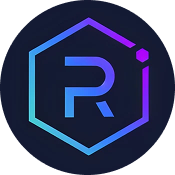In a landscape crowded with blockchain protocols, understanding the nuanced differences between platforms like Waves and Tezos is crucial for developers and investors alike. While Waves emphasizes simplicity, speed, and a user-friendly ecosystem for decentralized applications, Tezos champions on-chain governance, upgradeability, and formal verification for smart contracts. Both platforms aim to revolutionize how blockchain technology integrates with real-world use cases, but they do so through markedly different architectures and philosophies. This comparison explores their technological foundations, ecosystem capabilities, and ideal use cases to help you make informed decisions in your crypto journey.
Short on time? Jump to Waves vs Tezos Comparison
Understanding Waves and Tezos ?
Waves is a community-driven blockchain platform launched in 2016, designed to facilitate fast and affordable transactions along with smart contract capabilities. Its architecture is built around a modified proof-of-stake consensus called WavesNG, which aims to optimize throughput and reduce forks, ensuring quick transaction finality. Waves provides a versatile environment for creating decentralized apps, NFTs, and DeFi projects, with an emphasis on ease of use and interoperability. Its native token, WAVES, is used for transaction fees, staking, and governance, with a supply model that transitioned from fixed to inflationary, supporting ongoing network growth.
Tezos, launched in 2018 following a successful ICO raising over $230 million, is a self-amending blockchain that prioritizes on-chain governance and security. Its architecture employs a liquid proof-of-stake consensus mechanism, allowing token holders to delegate their stake to validators, known as bakers, to secure the network. Tezos’ unique feature is its formal upgrade process, which allows protocol amendments via on-chain voting—minimizing hard forks and enabling seamless evolution. With a focus on smart contract safety and flexibility, Tezos supports complex applications like DeFi, NFTs, and enterprise solutions, with its native token, XTZ, used for staking and governance.
While Waves aims to provide a fast, accessible platform for developers and businesses looking to deploy scalable DApps, Tezos centers on long-term sustainability through on-chain governance, formal verification, and upgradeability. Both projects have cultivated active communities and ecosystems, but their core philosophies reflect distinct approaches to blockchain development—one emphasizing speed and user-friendliness, the other prioritizing security and adaptability.
Understanding these foundational differences is essential for choosing the right platform for specific needs. Waves offers quick deployment and low-cost transactions ideal for startups and creative projects, whereas Tezos provides a resilient, upgradable infrastructure suited for enterprise-grade applications demanding high security and formal correctness.
Key Differences Between Waves and Tezos
Consensus Mechanism
- Waves: Waves utilizes WavesNG, a modified proof-of-stake protocol designed to support high throughput and reduce forks, enabling fast finality. Its approach simplifies transaction validation while maintaining network security. The protocol’s design emphasizes speed, scalability, and minimal energy consumption, making it suitable for high-frequency applications like DeFi and NFTs.
- Tezos: Tezos operates on a liquid proof-of-stake (LPoS) consensus mechanism, which allows token holders to delegate their stake to validators called bakers. This system promotes decentralization and security through economic incentives and slashing penalties for malicious activity. The emphasis is on long-term sustainability and network upgradeability via on-chain governance.
Upgradeability & Governance
- Waves: Waves supports protocol upgrades through community proposals and voting mechanisms, but it lacks a formal on-chain governance process. Upgrades typically involve off-chain coordination, which can be slower and less flexible, potentially leading to network forks if disagreements arise.
- Tezos: Tezos features a pioneering on-chain governance model allowing token holders to propose, vote on, and implement protocol upgrades directly on the blockchain. This self-amendment process reduces hard forks, ensuring protocol evolution is seamless and community-driven, fostering long-term adaptability.
Smart Contract Capabilities
- Waves: Waves supports smart contracts written in its RIDE language, designed for simplicity and speed. While capable of supporting a variety of decentralized applications, Waves prioritizes ease of use and quick deployment over formal verification, making it accessible but less suited for complex, safety-critical contracts.
- Tezos: Tezos uses Michelson, a domain-specific language optimized for formal verification, which enables developers to mathematically prove the correctness of smart contracts. This focus on security makes Tezos ideal for financial applications and enterprise solutions where correctness and safety are paramount.
Ecosystem & Use Cases
- Waves: Waves has cultivated a broad ecosystem including decentralized exchange (Waves DEX), NFT platforms, and DeFi apps. Its user-friendly environment and fast transaction speeds are attractive for startups, artists, and developers seeking quick market entry and low fees.
- Tezos: Tezos supports a robust ecosystem of DeFi projects, NFTs, and enterprise integrations, benefiting from its upgradeability and formal verification. Its community-driven approach and focus on security appeal to institutional users, developers prioritizing secure smart contracts, and projects requiring long-term sustainability.
Tokenomics & Supply
- Waves: Waves initially launched with a fixed supply of 100 million tokens, later transitioning to an inflationary model with ongoing staking rewards. Its tokenomics are designed to incentivize participation and network security while maintaining low transaction fees.
- Tezos: Tezos has a capped initial supply with inflationary rewards distributed to bakers. Its governance model allows for protocol amendments to adjust tokenomics over time, aligning incentives with network health and security.
Waves vs Tezos Comparison
| Feature | ✅ Waves | ✅ Tezos |
|---|---|---|
| Consensus Mechanism | WavesNG (modified PoS), supports high throughput and fast finality | Liquid Proof-of-Stake, promotes decentralization and security via delegation |
| Upgradeability | Community proposals, off-chain coordination, potential for forks | On-chain governance enabling seamless protocol upgrades |
| Smart Contract Language | RIDE, simple and fast but less formal verification | Michelson, designed for formal verification and security |
| Main Ecosystem Focus | NFTs, DeFi, easy deployment, user-friendly environment | DeFi, NFTs, enterprise solutions, security-focused applications |
| Tokenomics | Initially fixed, now inflationary with staking rewards | Capped initial supply with inflationary rewards, governed on-chain |
| Transaction Speed | Supports 1,000+ transactions per second | Designed for scalability, aiming for 1 million TPS in future |
Ideal For
Choose Waves: Waves is ideal for startups, artists, and developers seeking rapid deployment, low fees, and interoperability.
Choose Tezos: Tezos suits enterprises, financial institutions, and developers requiring secure, upgradable smart contracts with formal verification.
Conclusion: Waves vs Tezos
Waves and Tezos exemplify two distinct paradigms in blockchain technology—one prioritizing speed, usability, and community-driven deployment, the other emphasizing security, adaptability, and long-term sustainability through formal governance. Waves’ architecture facilitates rapid development of decentralized applications with minimal friction, making it an attractive choice for creative and commercial projects that need quick market entry.
Conversely, Tezos’ innovative on-chain governance and formal verification processes position it as a platform designed for high-stakes, security-sensitive applications. Its ability to upgrade seamlessly without forks ensures the network can evolve responsibly, appealing to enterprise users and developers who demand robustness and flexibility. Ultimately, the choice between Waves and Tezos hinges on your project’s priorities—speed and accessibility or security and adaptability.






